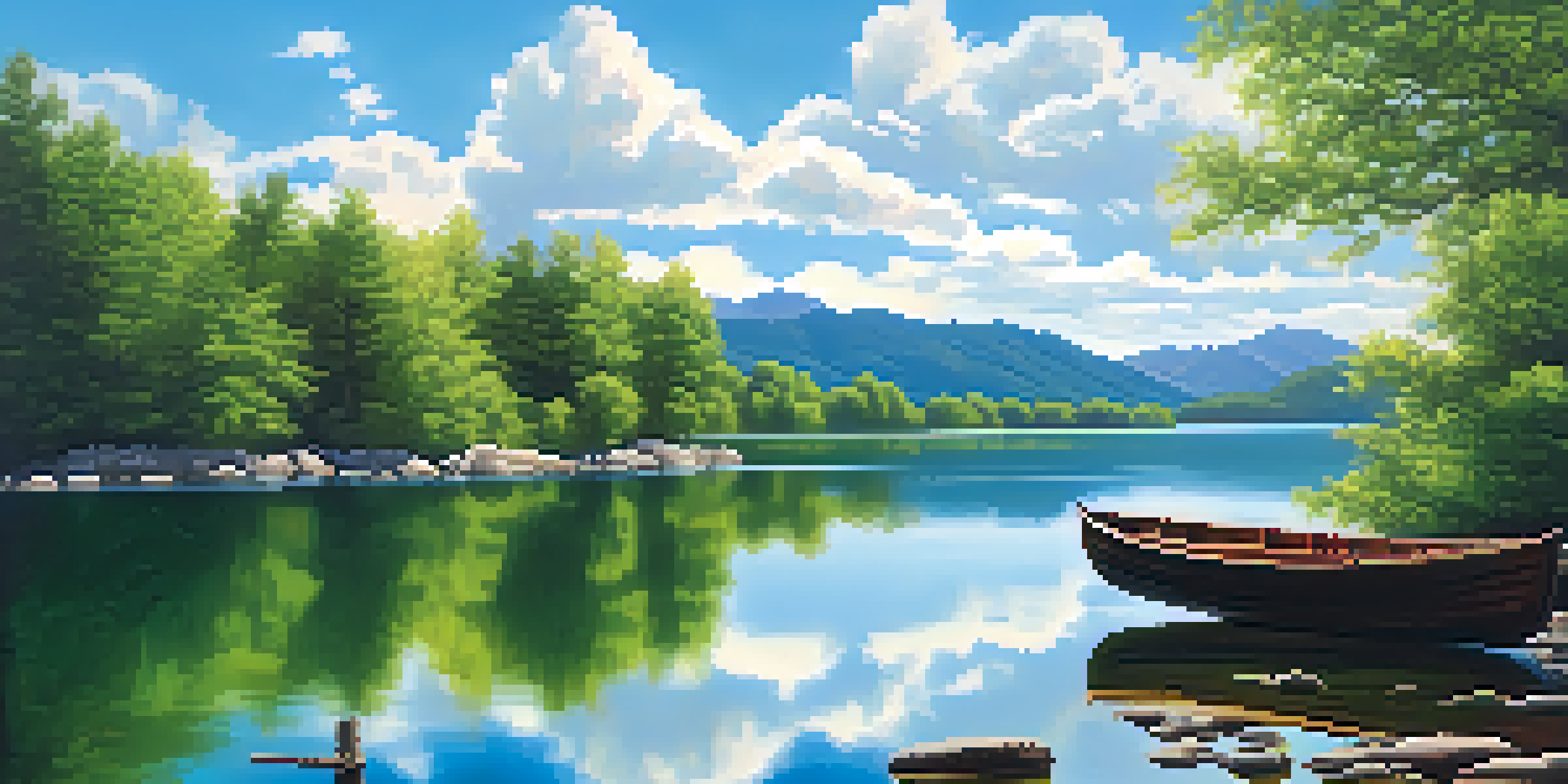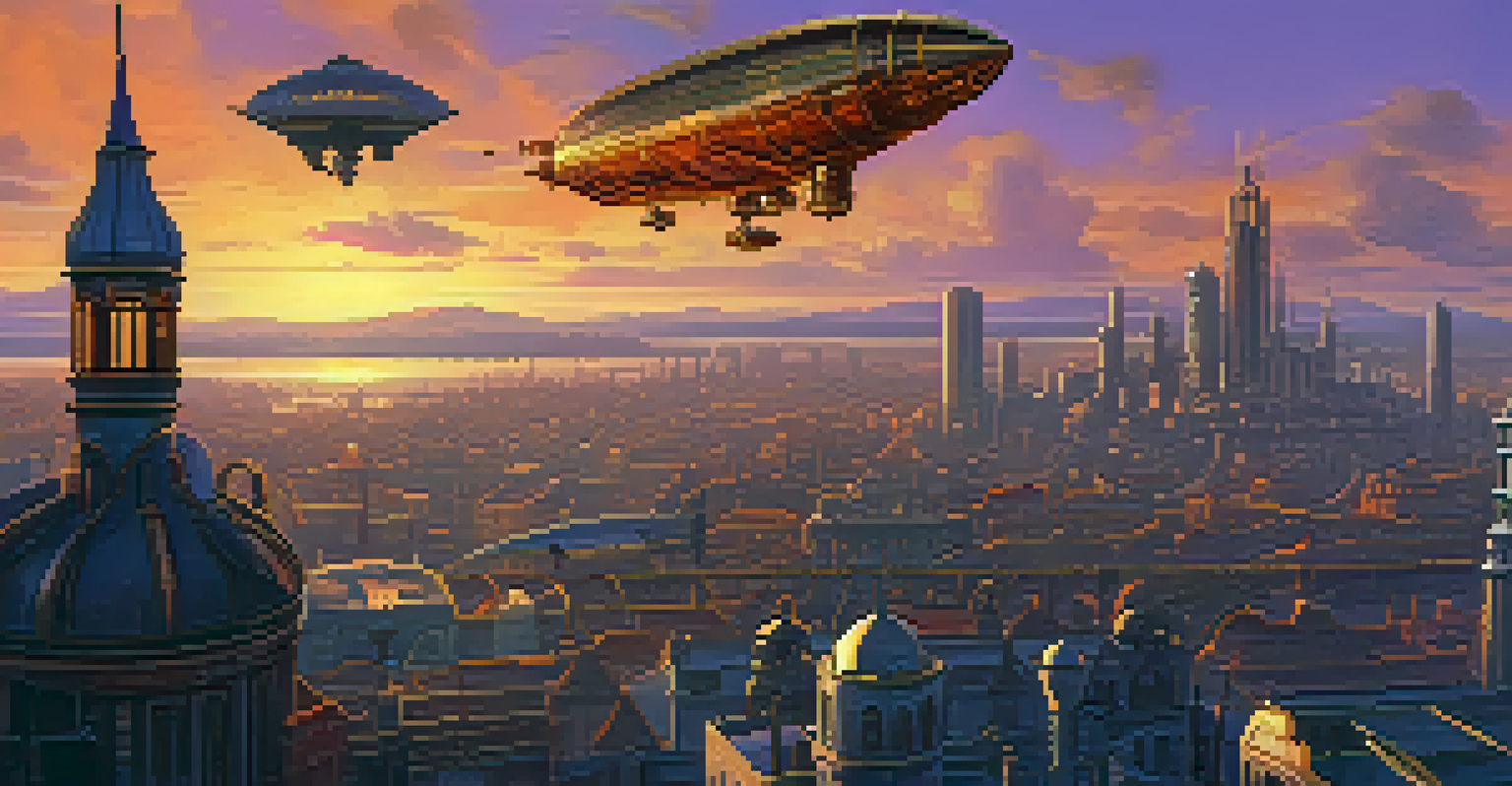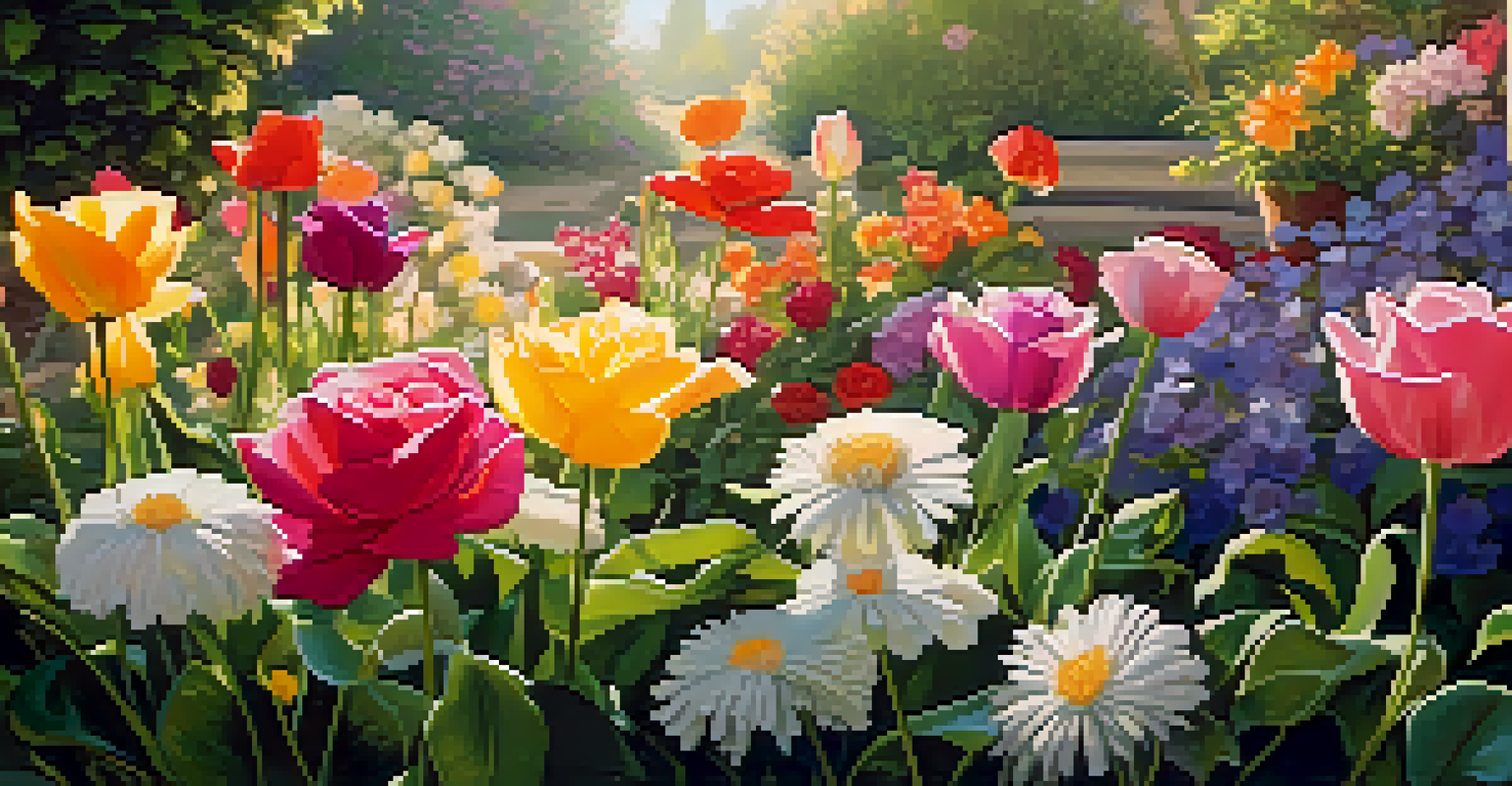Techniques for Creating 3D Art: From Concept to Creation

Understanding the Basics of 3D Art Creation
Before diving into the world of 3D art, it's crucial to grasp the fundamentals. 3D art involves creating three-dimensional objects using specialized software, allowing for realistic representations and imaginative designs. Understanding concepts like geometry, lighting, and texture will provide a solid foundation for your creative journey.
Art is not a thing; it is a way.
Think of 3D art as sculpting but in a digital space. Just as a sculptor manipulates clay, you will manipulate digital shapes and forms to bring your ideas to life. Familiarity with tools like Blender or Maya can help you get started, as they offer a range of features for beginners and advanced artists alike.
Additionally, learning the basics of 3D modeling, texturing, and rendering will empower you to express your creativity. With a solid understanding of these principles, you can transform your visions into captivating 3D artworks.
Brainstorming and Developing Your Concept
Every masterpiece begins with a spark of inspiration. Take time to brainstorm ideas for your 3D art project, considering themes, styles, and emotions you want to convey. Sketching your concepts on paper can be an effective way to visualize your ideas before diving into digital modeling.

Consider using mind maps or storyboards to explore different aspects of your concept. This approach not only helps in organizing your thoughts but also allows you to discover new angles and possibilities. Engaging with other artists or communities can also provide valuable feedback and new ideas.
Basics of 3D Art Creation
Understanding geometry, lighting, and texture is essential for creating captivating 3D artworks.
Remember, the concept stage is about exploration and creativity. Don't hesitate to iterate on your ideas until you find the one that resonates with you. After all, a well-developed concept sets the stage for a compelling 3D creation.
Choosing the Right Software for Your 3D Art
The choice of software can significantly impact your 3D art creation process. Popular options like Blender, Autodesk Maya, and Cinema 4D each offer unique features catering to different artistic styles and project requirements. Consider what aspects are most important to you, such as ease of use, advanced rendering capabilities, or specific modeling tools.
The best way to predict the future is to create it.
For beginners, Blender is a fantastic choice due to its accessibility and robust community support. It’s free and offers a wide array of tutorials to help you get started. On the other hand, professionals might lean towards Autodesk Maya for its industry-standard tools and features that facilitate complex animations.
Ultimately, the best software for you is one that aligns with your skills and artistic goals. Take the time to experiment with different programs to find the right fit that enhances your creative process.
Mastering the Art of 3D Modeling Techniques
3D modeling is the backbone of creating stunning 3D art. There are several techniques you can use, including polygon modeling, NURBS modeling, and sculpting. Each method has its strengths and is suited for different types of projects, so understanding these techniques can elevate your work.
Polygon modeling is often the most common approach, allowing artists to create complex shapes by manipulating vertices, edges, and faces. NURBS modeling, on the other hand, excels in creating smooth surfaces and curves, making it ideal for automotive and organic models. Sculpting, reminiscent of traditional clay modeling, provides a more intuitive way to shape your models in a freeform manner.
Choosing the Right Software
Selecting the appropriate 3D software, like Blender or Maya, can greatly influence your creative process and outcomes.
By mastering these techniques, you'll gain the versatility to tackle various projects with confidence. Experiment with each method to discover what resonates with your artistic style and the specific demands of your artwork.
Adding Textures and Materials for Realism
Once you've created your 3D model, the next step is to enhance it with textures and materials. This stage is crucial for adding depth and realism, as it simulates how light interacts with surfaces. Textures can be created from scratch or sourced from texture libraries, depending on your project needs.
Consider how different materials behave in the real world. For instance, a glossy surface like metal will reflect light differently than a matte surface like cloth. By carefully selecting and applying textures, you can create a more immersive experience for viewers.
Don't shy away from experimenting with various shaders and material settings in your software. Fine-tuning these elements can significantly impact the overall look of your 3D art, bringing your creations to life in vivid detail.
Lighting Techniques to Enhance Your 3D Scene
Lighting plays a pivotal role in setting the mood and atmosphere of your 3D art. By strategically placing lights in your scene, you can guide the viewer's eye and emphasize key elements of your artwork. Consider using three-point lighting, which involves a key light, fill light, and backlight for balanced and professional-looking results.
Different light types, such as point lights, directional lights, and spotlights, offer various effects. Experimenting with these can help you achieve the desired ambiance, whether dramatic or subtle. Remember, lighting can transform a flat scene into a dynamic visual experience.
Importance of Textures and Lighting
Applying realistic textures and effective lighting techniques enhances the depth and mood of your 3D art.
As you refine your lighting setup, don’t forget to test render your scenes frequently. This practice allows you to see how changes in lighting affect the overall composition, enabling you to make informed adjustments for the best possible outcome.
Rendering and Finalizing Your 3D Art Project
After all the hard work you've put into modeling, texturing, and lighting, it’s time to render your 3D art. Rendering is the process of generating a 2D image or animation from your 3D model, and it's where all your efforts come together. Depending on your software, rendering settings can vary significantly, so it’s essential to understand how to optimize them for quality and speed.
Consider aspects like resolution, sample rates, and rendering engines. High-quality rendering can take time, especially for complex scenes, but the results are often worth the wait. Patience during this stage pays off when you see your vision come to life.

Once rendered, you might want to use post-processing techniques in software like Adobe Photoshop or After Effects to enhance your final image or animation. This step allows you to add finishing touches and polish your artwork, ensuring it stands out in the best possible light.